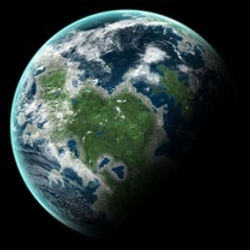
The AI Project
era of exploration
The Era of Exploration is an umbrella term used to describe the period of colonization from around the 2280's to the present, although some historians say that the Era truly ended in the early 2700s, making way for a new Era, the 'Era of Destruction'. However, this is not a fact set in stone. Many believe that the Era of Exploration will, and cannot, ever truly end, as humankind has the entire expanse of space to explore and, presumably, forever to explore it. This is a belief that has been brutalized by the introduction of an alien species to the human world.
After the year 2278, colonization began on a mass scale, with countries beginning to colonize their own planets (without direct approval from the UPN) and colonies on colonized planets beginning to do the same. For awhile, it was a free-for-all, with governments taking what they could when they could. In a way, it was a type of cold war, a space race all over again. Even though no country would gain from the expenditures, they still were steadfast in their conquest. This behavior continued until around the year 2634, when things began to settle down.
Colonization took a turn when in 2324, biodomes became a perfected art, although the biodomes in question were extremely basic. It was hard enough to find inhabitable planets- now, planets with an environment not quite habitable, but almost there, could be slowly terraformed with these biodomes. When built, the domes would allow for terraforming in the area underneath them, creating a bubble suitable for human life. Some planets were terraformed entirely this way, expanding possibilities. (See more on paraterraforming here)
However later in the year 2459, a new terraforming process was created. This process took place from above in spacecraft, using a variety of different lazers, chemicals, and other resources to alter the atmosphere and conditions until microbial life can be introduced into the planet. This life would be used to help create oxygen, for the sustenance of life. The planet also may need to be heated, an effort that originally called for mirrors (to reflect energy and heat from stars onward to the planet where it normally would not receive such heat), but later this was debunked and the use of fuels from new planets were used. Some such fuels, when burned, assisted in the creation of a 'greenhouse' effect whilst warming the planet. This did not remain a permanent solution, though. Suggestions for replicating the factors of global warming came about in 2447, and this concept has been used in some planets, but not many. A few stuck with the mirrors concept, but most used a combination of greenhouse effects, carbon-releasing fuels and other such devices.
Technology was developed around this time that permitted for the creation of basic atmospheres. Machinery that could break down resources into their basic molecules, organize the molecules by type, and create favorable combinations of them to produce an atmosphere were gradually introduced to planets. Such machine took decades to construct, although as time progressed, this process was sped up, with the production of such machines taking a mere year. This process had to be installed after basic terraforming, heating, and other processes took place.
Although terraforming has come a long ways, it is still ever growing and changing with the demands of humankind. For the most part, gaseous planets and irregular, super heated planets or incredibly frigid planets are still uninhabitable and are unable to be terraformed. However planets that are similar to the Earth's structure no longer are merely 'similar'- they can be repaired to a state of sustaining life. In most cases, planets requiring terraforming are widely left alone due to the drain on resources caused by the process.
It is not strange to find that many systems formerly believed to be incapable of sustaining life did indeed hold planets that were very similar to Earth. Most research performed prior to the year 2100 was later redone and edited with the introduction of new technology, and after the year 2200, much of this was rewritten as scientists could visit many planets that had been studied. Now, in the year 2759, it is estimated that perhaps 500 or 600 planets have been colonized by humans, some more thoroughly than others.
Below is a list of notable planets.
Human Planets
Khaian PLanets
To be added (as soon as I can make the damn website let me put two slide shows on one page... ugh)
 Earth |  Durness |  Freiza |
|---|---|---|
 Alva |  Noveria |  Necria |
 Taloona |  Motherwell |  Irvine |
 Geofir |  Porouss |
Click on an image for a brief description of the planet.
Links on each planet link back to the image source.
For more information on each planet, please check out the Planets Page.